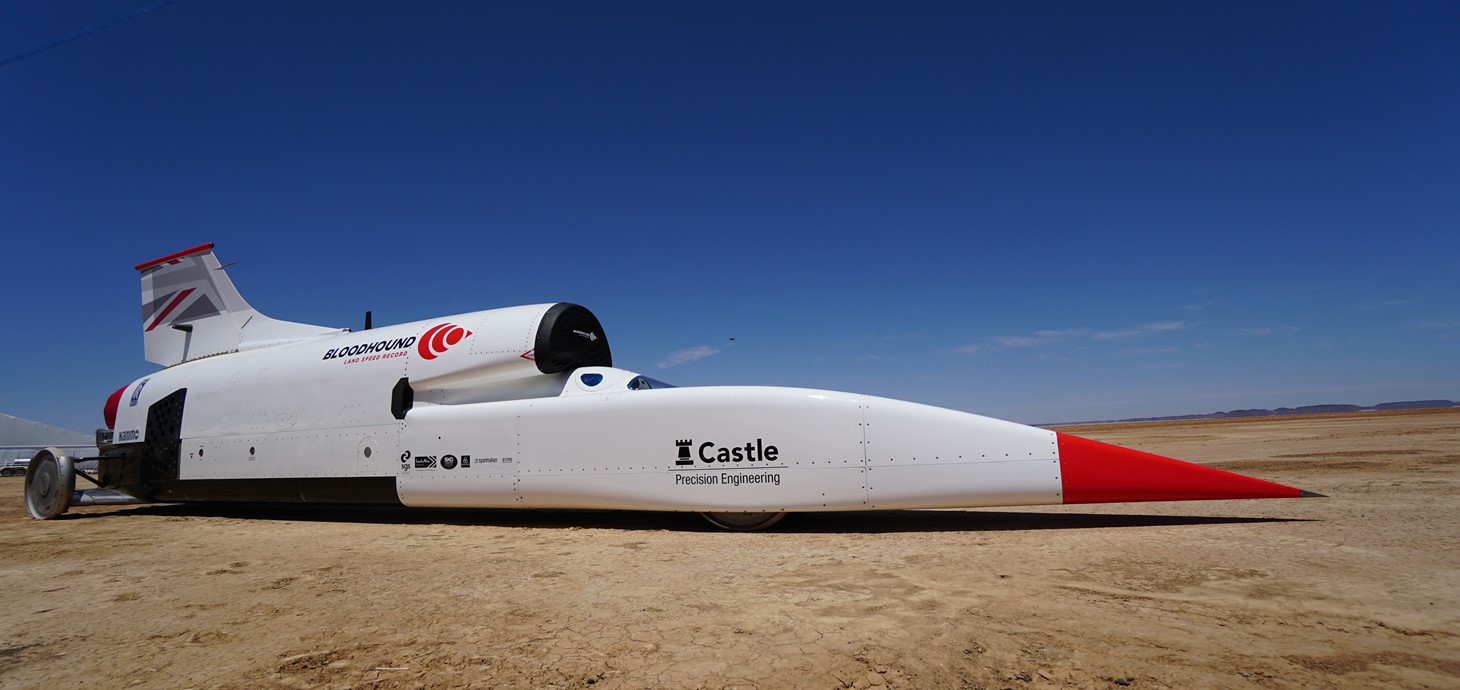These articles are now archived and will no longer be updated.

The Bloodhound Land Speed Record (LSR) team has revealed the car aiming to claim a new world land speed record next year, seen for the first time in completed desert spec as it begins its high-speed testing programme in the Hakskeenpan desert, Northern Cape, South Africa.
It’s the first time the car has been seen with its precision machined solid aluminium wheels, made specially to withstand the stresses of travelling at supersonic speeds. For its first test session, the wheels will be tested up to 500+ mph (800 km/h).
The high-speed tests will see the Bloodhound LSR car blasting along the Hakskeenpan desert racetrack for the very first time, providing a spectacular showcase of British engineering to a global audience. The Bloodhound team’s primary objective is to engage and inspire people of all ages through the most extreme application of science, technology, engineering and mathematics.
Swansea University has been instrumental in the project’s success to date, thanks to the contribution of its expertise in Computational Fluid Dynamics (CFD) research, with College of Engineering researchers working as part of the design team on the aerodynamic design of the supersonic car.
One of the key objectives of the high-speed testing programme is, counterintuitively, to evaluate how the car behaves when slowing down and stopping from a number of target speeds, building up to and beyond 500 mph (800 km/h).
Only once engineers and driver Andy Green are satisfied they understand the drag and stopping ability of the car will they push to the next run profile, building speed in each run by increments of 50 mph (80 km/h).
The Bloodhound LSR team will examine how much drag the car creates in a number of scenarios and at various speeds, using the wheel brakes, one or both of the drag parachutes, and with the giant airbrakes locked into position.
Data from 192 pressure sensors on the car will be monitored and compared against the predicted CFD models to ensure they marry up. Bloodhound’s engineers will be working with Swansea University’s Dr Ben Evans, associate professor in aerospace engineering, and PhD student Jack Townsend, to check the data, which will reveal the amount of drag experienced by the car on each run. This data is critical to determine the size of the rocket that will be fitted to the car for the attempt to set a new World Land Speed Record in 12 – 18 months’ time.
Dr Ben Evans said: “After over a decade of research and development and intensive design we’ve finally reached the point where we get to find out how Bloodhound will perform at high speed. The high-speed testing taking place in Hakskeenpan throughout October and November will provide us with the crucial data necessary to validate the aerodynamic computer models that we have been running at the College of Engineering. If all goes to plan then we will have the confidence in the design of the car that we need to go for a record attempt within the next 18 months. These are exciting times!”
Follow Dr Ben Evans on Twitter for daily updates from the high-speed trials.
